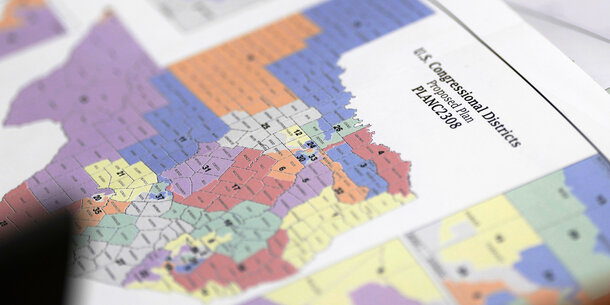In recently proposed changes for the 2030 census, the federal government is seeking to have Latinos identify their race on the questionnaire just as easily as they declare their ethnicity. It is important that they do so for reasons that have less to do with identity than with the political clout of Latinos and other people of color.
One reason is that improving responses would help the government collect better data and enforce civil rights protections for Latinos and communities of color. Another reason is that a correct count might lead to more opportunities for our diverse communities to be more accurately captured when electoral districts are drawn, increasing these communities’ political influence.
Choosing a race has not come easily to a multi-racial population that often defines itself by cultural traits, not racial ones. The disconnect between how a large number of Latinos view themselves and how the census wants to count them every 10 years has only grown over the decades.
Currently, the census form first asks respondents to declare their ethnicity. That question works well, with 62.1 million Latinos identifying themselves as “Hispanic, Latino, or Spanish origin” in 2020.
But then a separate question asks respondents to choose among race categories: White, Black or African American, American Indian or Alaskan Native, Asian, Native Hawaiian or Other Pacific Islander, or Some Other Race. More than 26 million Latinos opted for “some other race” in 2020, and bypassed the racial categories.
Why does the federal government insist on pinning down race?
For starters, that data is used to enforce antidiscrimination laws and voting rights laws, allowing for better monitoring of discriminatory practices in hiring and racial disparities in education and health. Further, under the Voting Rights Act, racial and ethnic groups that are sufficiently big may qualify for electoral districts where they can elect candidates of their choice.
More accurate self-reporting may increase the statistical size of communities; in other words, when, say, Black Latinos are counted as both Black and Latino they bolster the numbers for both groups. So, it is not just about identity.
Now the government is proposing a new fix: combining the ethnicity and race questions into one, so people can check all the boxes that apply in one fell swoop — Latino and white, or Latino and white and Black, and so on.
Census Bureau research suggests this would lead more people to declare both their racial and ethnic identities than the separate questions currently do. And we at the Brennan Center support this change, along with Latino organizations and other civil rights groups, as taking the first steps toward matching the census form to today’s demographic realities.
But we are also calling for other changes to improve the accuracy, equity, and legitimacy of the count. Our recent report lays out a comprehensive reform agenda for the census. Our recommendations include establishing the Census Bureau as its own executive agency, independent from the Department of Commerce, to limit future presidential interference and avoid episodes like the Trump administration’s last-minute attempt to add a citizenship question to the 2020 form. We also call for barring untested additions to the census questionnaire, so the bureau is required to follow more transparent processes for adding questions, such as providing an opportunity for public input on newly proposed questions. Further, the president should be removed from the apportionment process so that the director of the Census Bureau delivers the apportionment numbers directly to Congress.
Now is the time to provide feedback to the federal government. The Census Bureau will need to test and perfect new question formats, a process that can take years. The proposal for a combined ethnicity and race question is an encouraging sign that the 2030 Census may not repeat some of the same mistakes.
This was originally published in Spanish by La Opinión.



